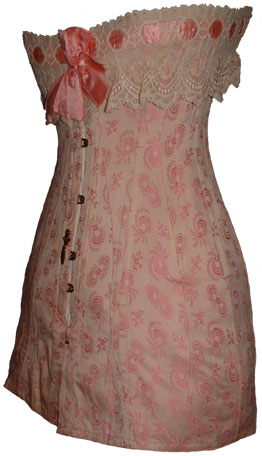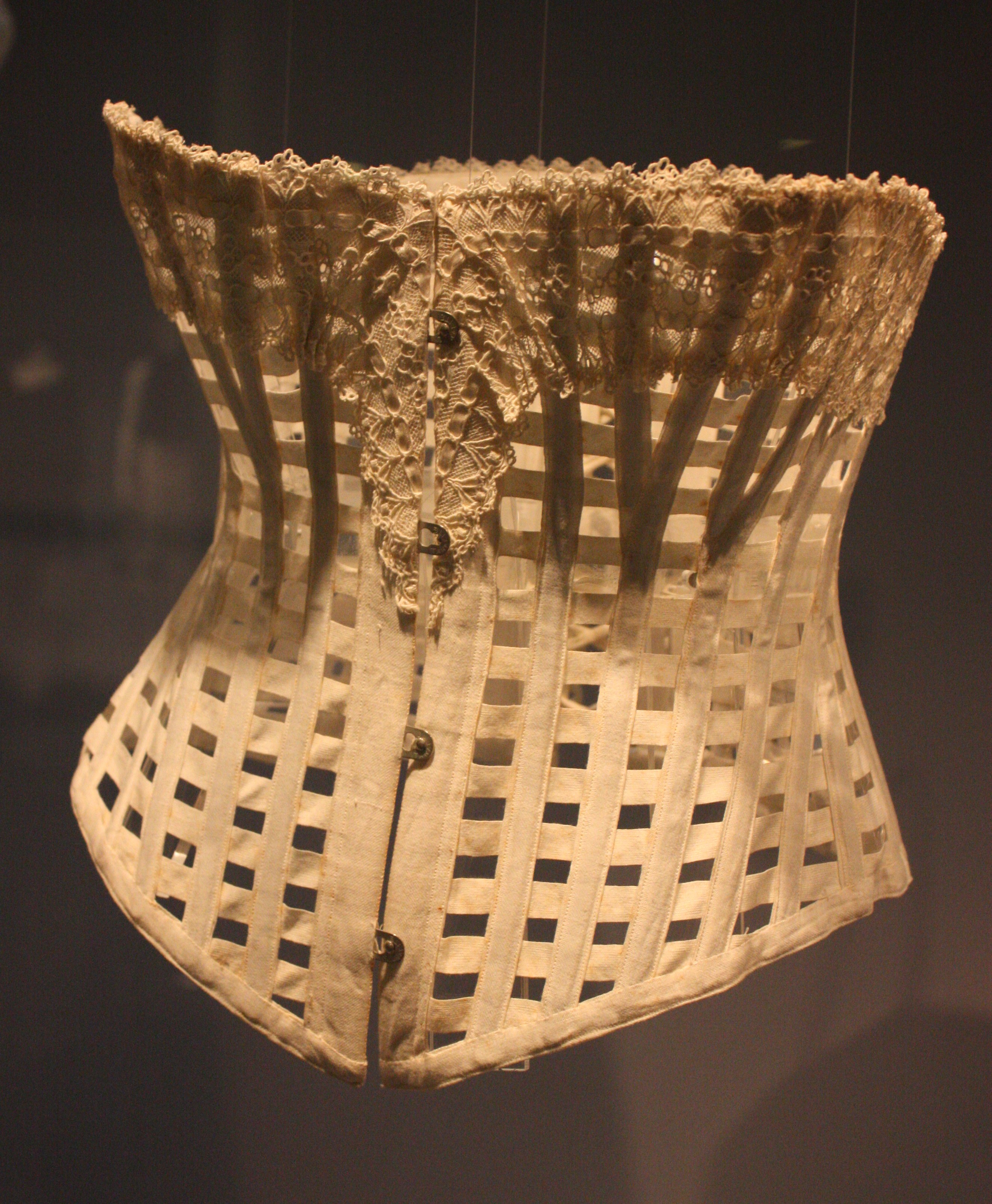 |
| ruesaintplacide.com |
Student Portfolio: Fall 2015
Table of Contents:
Summary.......................................................................
Cultural Context............................................................
Classification System of Dress......................................
Siple’s Clothing Zones...................................................
Sheldon’s Somatotypes..................................................
History............................................................................
Zeitgeist..........................................................................
The Art of Dress..............................................................
Individuality and Conformity..........................................
Cultural Ideal of What is Attractive.................................
Dress and the Future........................................................
References........................................................................
Summary
As a woman in this society, I've grown up hearing the phrase "beauty is pain". The corset brings this saying into a whole new light. Women often traded a slender appearance for immense amounts of pain and discomfort. It amazes me how anyone could ever view this as acceptable.
Obviously the idea of the corset has evolved overtime. We still see corsets in our current fashion today, but they often serve a different purpose. The corset is usually used in sexual ways. I think modern corset can be very beautiful and trendy. I wanted to see how the corset became what it is today. This blog outlines the history and timeline of this piece.
I chose to study the corset because I like to see how people's perceptions change overtime. Today women turn to other alternative to obtain desired body figures. It's hard to be a woman in our culture and not worry about body appearance- I can speak from personal experience. Healthy lifestyles and regular exercise are more traditional and practical ways of staying slender. These ways are healthy and easier on the body that constricting under garments. I think everyone can learn something from this past history. It's given me a new perspective of what is really important. We don't need to use an article of clothing to define who we are as a person.
 |
| http://www.collectorsweekly.com/ |
 |
| http://www.knowlesville.com/ |
 |
| http://www.collectorsweekly.com/ |
Cultural Context:
 |
| The corset onesie Jean-Paul Gaultier designed for Madonna wornthrough.com |
The
corset has been around for nearly 500 years. In the Victorian Era when the corset first boomed, the idea of it was to give fashionable women an “ideal figure”, curvy with an unnaturally small waist. They were very uncomfortable, restricting, and unpleasant to wear. In today’s world, the corset is used much differently. Women focus on other routes to obtain an “ideal” body image. The corset is now commonly used for sex appeal and is worn to look sexy or trendy. Corsets were first widely worn during the
16th century. They formed a high slender waist just under the bust and lifted the breasts. Although corsets were not
meant to be seen, they were often quite decorative and elegant. They were made
from elegant fabric and had fine stitching. Sometimes they even contained gold
trimming. In today’s world the corset has drastically evolved. In the 1980's,
Madonna brought the corset back into public attention with the help of her
favorite designer, Gaultier, but she presented it as top garment rather than an
under garment. This changed the perception of the corset. Nowadays real corsets
are rarely worn. Celebrity sometimes wear them as a visible fashion statement,
but mostly they are still worn underneath for erotic reasons. The basic shape
is still the same as it was in the 1860’s and 80’s. Corsets now are commonly
seen as lingerie and usually don't compress the waist nearly as much.
 |
| pinterest.com |
 |
| Rihanna and Paris Hilton wearing the corset dress by Alexander Wang |
 |
| Rihanna wearing a corset with a pair of jeans fashionable-inspired.blogspot.com/ |
Classification System of Dress:
The
corset is a body modification. It causes a temporary change in the structure of
the body. The corset was designed to dramatically change the basic shape of a woman's waist by constricting the torso. They were reinforced with stiffeners like
whalebone or wood. They fit very tightly, causing the body to be molded into a
desired shape. The shape was originally architectural, making a woman’s torso a
straight-sided, inverted cone. It affected only the torso and left the hips and
arms free. This forced women into a proper upright posture. It was important for women to have this correct posture. The corset was
essential for fitting into clothes and for modesty. The corsets gives the appearance of the perfect “hour glass figure”. It changes the perception of the body as well as
the visual aspects.
 |
| English "ventilated" corset of whalebone and cotton, late 19th century http://en.wikipedia.org/ |
 |
| fashionable-inspired.blogspot.com |
Siple’s Clothing Zones:
The Corset could fall under several
clothing zones. Women use to wear it every day regardless of the temperature. They
could be worn in all of the zones. In today’s world the corset is mostly worn
for special occasions such as weddings, proms, or as lingerie. According to
Siple’s clothing zones, I would say that the corset today falls into the
minimal clothing zone, the hot and dry clothing zone, and the one and two-layer
clothing zones. The original corset from past history would fall into pretty
much every zone expect for the arctic winter zone.
Sheldon’s Somatotypes:
The corset was worn by all women
regardless of their shape. Its purpose was to give women the desired hour glass
figure. Endomorphic, mesomorphic, and ectomorphic individuals can all wear this
garment. Women with endomorphic and mesomorhpic figures would benefit a little
more from wearing a corset because it would change their appearance more
drastically. In today’s world the corset is often viewed a sex symbol and is
worn as lingerie. In these cases, the corsets are designed for women with an ectomorphic
build.
 |
| beautyheaven.com |
 |
| frivolousuniverse.com |
 |
| The corset today as lingerie 99corsets.com |
Dress and Culture Scale
Constellation of Culture Traits
 |
| http://fiberartistjourney.blogspot.com |
Royalty
 |
http://hazeltwigg.com
|
Social Class
 |
| www.pinterest.com |
 |
| www.pinterest.com |
 |
| http://thelingeriejournal.com/ |
 |
| http://www.gloutir.com/ |
Status Ascribed by Gender
History
The corset has impacted culture because it defined how a women should look. It introduced the desired curvy figure that women aspire to today. The corset made it's debut in the Victorian era and was worn by royalty. As time went on, the corset was worn everyday by women. The pictures above show the class of women that wore corsets. It was a symbol of high status and class. Today it has evolved into a piece of clothing most commonly used in sexual contexts. It is no longer something that women wear everyday. Celebrity's are slowly bringing the corset back into everyday fashion. Corsets are now commonly seen on fashion runways and in sexy advertising.
Zeitgeist
The corset has definitely been through many style changes throughout the decades. The pictures below show how this piece has evolved over time. The corset doesn't really define just one decade. they were most common in the Victorian era and in the early 1900's, but they've been seen in every time period. Today they are much more risque.
 |
| http://clermontstatehistoricsite.blogspot.com/ |
 |
| http://www.teamblasecosplay.com/ |
The Art of Dress
Body-Dominant:
The corset is a body-dominate. The whole point of this piece is show off the figure of the body. The corset fits very tightly and shows the curves.
Aesthetic:
There is definitely a right way to wear a corset. It must be laced up tightly so that it can serve it's purpose. The corset is designed for women, not men. Wearing a corset should enhance the way your body looks. It should be slimming and faltering.
DO
 |
| http://www.vvdresses.com/ |
 |
| http://www.ijreview.com/ |
 |
| http://www.foeverdress.net/ |
DON'T
 |
| http://lucycorsetry.com/ |
 |
| http://pretty-corsets-4861.rjphoto.biz/ |
 |
| www.pinterest.com |
Individuality and Conformity
In the beginning women wore corsets to conform to the social norms of the time. Girls started wearing corsets as early as age 15. However, even during these times individuality could be expressed. Corsets came in all sorts of colors and designs. Expensive materials and laces were used to make this piece more elegant.
In toady's society the corset isn't worn to conform in a certain expectation. It is worn to look sexy or as a fashion statement. You can express yourself through a variety of corset styles.
Cultural Ideal of What is Attractive
Elements of Design:
Form: the corset shapes the body into a certain mold. It changes the form of a women's waist.
Color: the corset comes in countless numbers of colors and designs. Each style is unique and attractive in it's own way.
lines: many corsets use wires that accent the narrow parts of the waist. This makes the look more attractive and flattering.
Shape: the corset creates an attractive body shape that is desired by most women. This changes how the the body is perceived.
Principles of Design:
Emphasis: The corset puts an emphasis on a women's small waist. It draws attention to the upper half of the body.
Dress and the Future
The world has already changed the corset so much. I believe that in the future the only big changes made to this garment will be the decorations and embellishments on the outside. I can see the corsets being made up very fancy, maybe even with jewels. There will be new patterns and more elaborate fabrics and materials. I think the corset will continue to be incorporated into formal gowns and wedding/prom dresses. I don't see the corset ever going away. I think it will always be used to enhance a woman's figure. I think both high power celebrities and middle class women will continue to wear them. I believe they will still be used for sex appeal and as a fashion statement.
 |
| http://instylefashionone.com/ |
 |
| http://artlikebread.tumblr.com/ |
References:
Caelleigh, A. Too Close for Comfort: The History of Corsets. Retrieved April 27, 2015, from http://exhibits.hsl.virginia.edu/clothes/
Hix, L. (2012, January 17). Everything You Know About Corsets Is False. Retrieved April 27, 2015, from http://www.collectorsweekly.com/articles/everything-you-know-about-corsets-is-false/
Hogarty, S. (2012, June 7). Corsets in Context: A History. Retrieved April 27, 2015, from http://deyoung.famsf.org/blog/corsets-context-history
Mahe, Y. (2013, July 2). History of Women's Corsets Part 1. Retrieved April 27, 2015, from http://www.fashionintime.org/history-of-womens-corsets-part-1/
 |
| www.pinterest.com |
